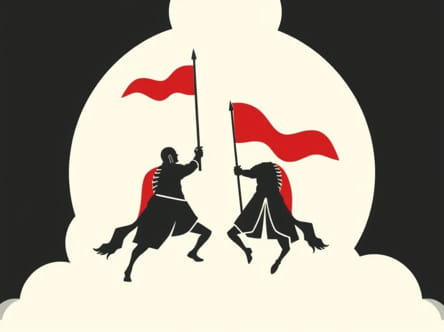The Battle of Waterloo, fought on June 18, 1815, remains one of the most pivotal events in European history. It marked the final defeat of Napoleon Bonaparte, ending more than two decades of conflict that had engulfed the continent during the Napoleonic Wars. Set near the town of Waterloo in modern-day Belgium, the clash brought together the forces of the French Empire against a coalition army commanded by the Duke of Wellington, with support from Prussian troops led by Field Marshal Gebhard Leberecht von Blücher. This dramatic encounter not only reshaped the map of Europe but also laid the groundwork for a new political order. The battle is frequently studied for its strategic complexities, leadership decisions, and enduring legacy in military history.
Background of the Conflict
By early 1815, Napoleon had returned from exile on the island of Elba and reclaimed power in France, launching what became known as the Hundred Days. His return alarmed the rest of Europe, which had just begun to settle after years of war. In response, the Seventh Coalition, composed of Britain, Prussia, Austria, Russia, and other allies, mobilized to remove him from power once and for all. Napoleon sought to strike swiftly and divide the coalition forces before they could unite against him.
Napoleon’s Strategic Gamble
Napoleon planned to invade Belgium, where British and Prussian forces were positioned. His aim was to defeat them separately before they could combine their armies. On June 16, he managed to defeat the Prussians at the Battle of Ligny. However, his attempt to simultaneously neutralize the Anglo-allied forces at Quatre Bras was less successful. This allowed the Duke of Wellington to regroup and prepare for a final stand near the town of Waterloo.
The Battlefield and Opposing Armies
The battlefield was chosen by Wellington for its advantageous defensive features. It consisted of a ridge just south of Waterloo, which gave the Anglo-allied troops a strong position. Napoleon commanded approximately 73,000 soldiers, while Wellington had around 68,000, reinforced later by 50,000 Prussians. Despite being outnumbered at the beginning, Wellington relied on his strategic placement and the promise of Prussian support.
Composition of the Forces
- French Army: Veteran soldiers, Imperial Guard, artillery, and cavalry under Napoleon’s direct command.
- Anglo-Allied Army: A mixed force of British, Dutch, Belgian, and German troops led by Wellington.
- Prussian Army: Commanded by Blücher, composed largely of experienced infantry and cavalry divisions.
Key Phases of the Battle
Morning Assaults
The battle began in the late morning of June 18 with a diversionary attack on the Hougoumont farmhouse, located on Wellington’s right flank. Although intended as a distraction, the French committed significant resources to capture it, which failed and drained crucial manpower.
Midday Attacks
In the center, Napoleon ordered Marshal Ney to launch a major assault against the allied lines. French columns advanced but were repelled by well-positioned British infantry and heavy artillery fire. Ney misinterpreted movements on the battlefield and ordered repeated cavalry charges, which also failed to break Wellington’s lines.
Arrival of the Prussians
By late afternoon, the tide began to turn. The Prussian army, recovering from their earlier defeat, arrived on Napoleon’s right flank, attacking the village of Plancenoit. Despite stiff French resistance, the Prussians gradually pushed forward, forcing Napoleon to divert troops away from the main assault.
Final Assault and Collapse
In a final attempt to break the British line, Napoleon sent in his elite Imperial Guard. This assault was famously repelled by British forces. The failure of the Guard caused panic and a complete collapse of French morale. As the French retreated, coalition forces pursued them, turning the retreat into a rout.
Aftermath and Consequences
The defeat at Waterloo ended Napoleon’s rule once and for all. He abdicated a second time and was exiled to the remote island of Saint Helena, where he died in 1821. The victory solidified the reputations of both Wellington and Blücher and brought an end to the Napoleonic Wars.
Impact on Europe
- Political Stability: The Congress of Vienna, which had already begun to reshape Europe, gained momentum to restore monarchies and redraw borders.
- Military Legacy: The tactics and leadership styles displayed at Waterloo were studied extensively in military academies.
- Symbolism: The battle became a symbol of coalition unity and determination to defeat tyranny.
Legacy in History
Waterloo became a defining moment in European memory. The word ‘Waterloo’ entered the English language as a synonym for decisive defeat. Monuments, books, and annual commemorations continue to honor the legacy of those who fought there. The battle also triggered discussions on war, leadership, and the importance of timely reinforcements.
Analysis of Leadership
Napoleon’s Decisions
While still a brilliant tactician, Napoleon made several critical errors. He underestimated the resilience of Wellington’s troops and failed to anticipate the rapid arrival of the Prussians. His overreliance on frontal attacks and mismanagement of reserves contributed to his downfall.
Wellington’s Strategy
Wellington demonstrated exceptional defensive tactics, using terrain to his advantage and maintaining discipline among his mixed coalition army. His coordination with the Prussians was crucial, as was his ability to hold the line under intense pressure until reinforcements arrived.
Blücher’s Role
Blücher played a vital role by rallying his forces after Ligny and marching to Waterloo in time to tip the balance. His determination and timely arrival sealed the fate of Napoleon’s army.
The Battle of Waterloo was not just a military engagement but a turning point in European history. It demonstrated the importance of coalition warfare, strategic planning, and timely execution. The fall of Napoleon ushered in a new era of relative peace in Europe, enforced by a balance of power maintained through diplomacy and cooperation. For historians and military scholars, Waterloo remains a case study in leadership, logistics, and the unpredictability of war.
